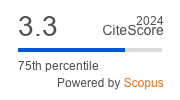Article | Open Access
Pathways to Inclusion? Labor Market Entry Trajectories of Persons With Disabilities in Europe
| Views: | 1438 | | | Downloads: | 1120 |
Abstract: Almost a fifth of the population in OECD countries report having a disability and the proportion of students classified as having special educational needs (SEN) has steadily increased over recent decades. While this group faces marginalization in schooling and employment everywhere, there are profound differences in disability‐based disadvantages across countries. However, comparative research on the labor market opportunities of persons with disabilities (PwDs) remains limited, especially regarding school‐to‐work transitions (STWT) that are crucial for subsequent labor market opportunities. Thus, lacking comparative knowledge on how institutional contexts shape these transitions also limits opportunities for policy learning and improvement of supports provided. This study addresses these gaps by analysing longitudinal data from the European Statistics on Income and Living Conditions (EU‐SILC). First, using sequence and cluster analysis, we classify these trajectories and provide an in‐depth analysis of labor market entry patterns for PwDs compared to those without disabilities across 31 European countries. Second, we explore whether the timing of first employment, instability during the STWT, as well as inclusionary or exclusionary transitions vary between these groups and how the disparities between persons with and without disabilities regarding these indicators are related to institutionalized segregation and support structures. Our findings highlight that PwDs usually do not transition more slowly to (some form of) employment, yet they experience more instability and less inclusion during their STWT. Segregation exacerbates disadvantages, whereas institutional support structures reduce the disadvantages youth with disabilities face when these programs actively facilitate pathways to inclusion.
Keywords: disability; Europe; European comparisons; inclusion; labor market; pathways; school‐to‐work transition; segregation; sequence analysis; support
Supplementary Files:
Published:
© Jonna M. Blanck, Christian Brzinsky-Fay, Justin J. W. Powell. This is an open access article distributed under the terms of the Creative Commons Attribution 4.0 license (http://creativecommons.org/licenses/by/4.0), which permits any use, distribution, and reproduction of the work without further permission provided the original author(s) and source are credited.


